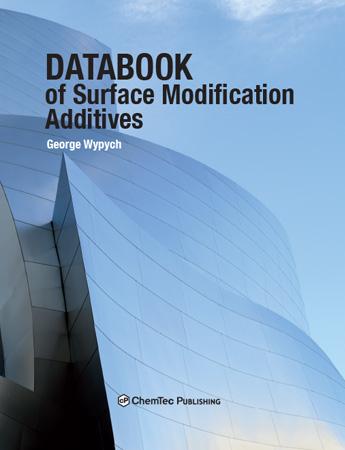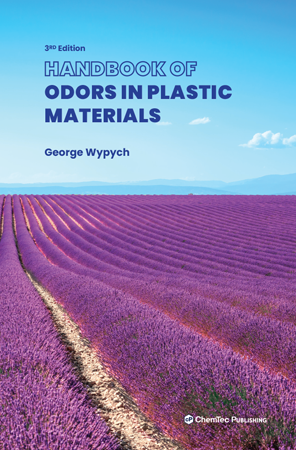Ten groups of additives are commercially available for improvement and surface modification of manufactured materials. These include additives improving anti-scratch and mar resistance, gloss, surface flattening, tack reduction, tack increase (tackifiers), surface tension reduction and wetting, surface cleaning, hydrophobization, anti-cratering and leveling, and coefficient of static friction. A large number of final products benefit from application of these additives, with major groups of industrial products including adhesives, appliances, automotive, bookbinding, building and construction, business machines, cellular phones, coatings, concrete, electronics, flooring, footwear, furniture, graphic arts, lacquers, leather, optical films, packaging, paints, paper, plastics, printing inks, rubber, sealants, wire and cable, and wood.
Databook of Surface Modification Additives contains extensive data on the most important products in the use today. The information on each additive included in the Databook of Surface Modification Additives is divided into five sections: General information, Physical properties, Health and safety, Ecological properties, and Use & performance. The data belong to almost 130 data fields, which accommodate a variety of data available in the source publications. The description of each section below gives more detail on the composition of information.
In General information section, the following data are displayed: name, CAS #, EC #, Acronym, Active matter, Bio-renewable content, Bromine number, Chemical class, Common synonym, Empirical formula, Functional group, Mixture, Mn, Mw, Mw/Mn, Mz, Moisture content, Moisture contents, Name, Product composition, Residue after calcination, and Solids content.
Physical-chemical properties section contains data on State, Odor, Color, Color (Gardener), Color (platinum-cobalt scale), Acid number, Acidic residue, Boiling point, Bulk density, Cloud point values of DACP, EMDA, MMAP, ODM, and OMSCP, Density, Erichsen scratch visibility test, Evaporation rate, Gel sediment, Glass transition temperature, HLB value, Hydroxyl number, Iodine number, Kinematic viscosity, Melt flow rate, Melting point, pH, Refractive index, Relative density, Softening point, Solubility in solvents, Solubility in water, Specific gravity, State, Static coefficient of friction, Surface tension, Vapor density, Vapor pressure, Viscosity, Volatility, Water absorption, and Yellowness index.
Health and safety section contains data on Autoignition temperature, ADR/RID class, Agency ratings, Carcinogenicity by ACGIH, IARC, NTP, and OSHA, Chronic health effects, Derived no effect level, Dermal LD50 Guinea pig, DOT Class, Eye irritation, Explosive LEL, Explosive UEL, Exposure limits: ACIGH, NIOSH, and OSHA, Exposure personal protection, First aid: eyes, skin, and inhalation, Flash point, Flash point method, HMIS Health, HMIS Fire, HMIS Reactivity, Hazard class, Hazardous combustion products, ICAO/IATA class, IMDG class, Ingestion effect, Inhalation effect, Inhalation LC50 Rat, Mutagenicity, NFPA Health, NFPA Flammability, NFPA Reactivity, Rabbit dermal LD50, Rat oral LD50, Skin irritation, Teratogenicity, UN number, UN Risk Phrases, R, and UN Safety Phrases, S.
Ecological properties section contains data on Aquatic toxicity LC50 (Green algae, Bluegill sunfish, Daphnia magna, and Fathead minnow), Bioaccumulative (BCF factor), Biodegradation probability, and Partition coefficient (log Koc and log Kow).
Use & performance section contains information on Manufacturer, Outstanding properties, Potential substitute, Recommended for polymers, Recommended for products, Recommended applications, Processing methods, Concentration used, and Food approvals.
The above data are given, whenever available, for approximately 360 of the most important surface modification additives produced and used today.
The data included in Databook of Surface Modification Additives represent major suppliers and are based on the most recent available information regarding additives selection. The examples of application are also discussed.
1. Introduction
2. Information on the data fields
3. Additives
a. Anti-scratch and mar resistance
b. Gloss enhancement
c. Surface matting (flattening)
d. Tack-free surfaces
e. Tackifiers
f. Surface tension reduction and wetting
g. Easy surface cleaning
h. Water repelling (hydrophobization)
i. Anti-cratering and leveling
j. Improvement of the coefficient of static friction




